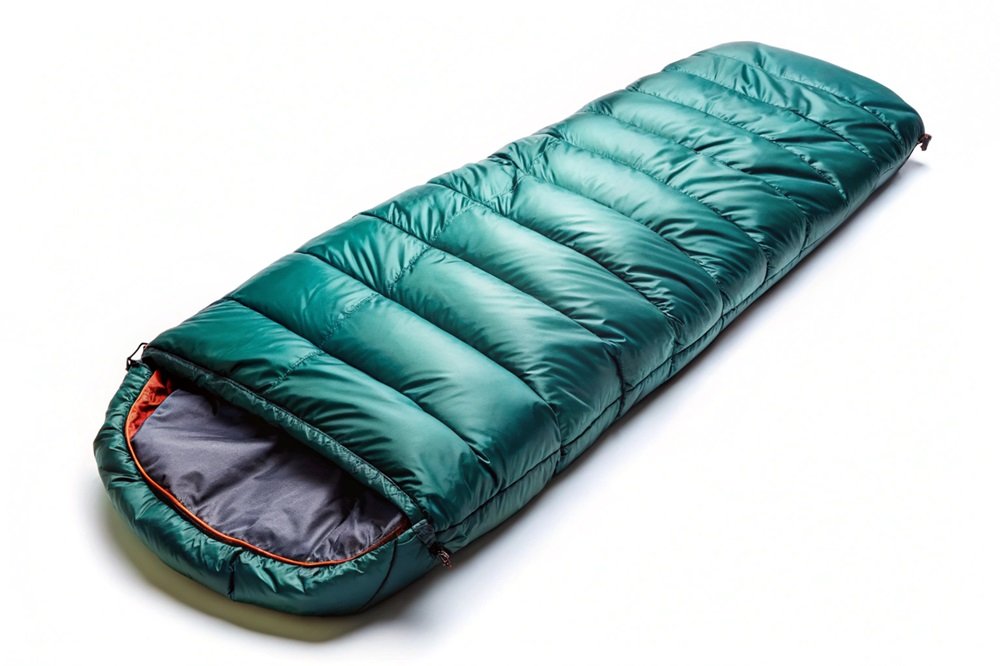When shopping for bags, jackets, or even a used down sleeping bag, nothing is more frustrating than discovering broken zippers or weak fabric after getting home.
Testing these components takes just minutes but can save you significant headaches later.
About 23% of garment returns happen because of zipper failures, according to consumer reports. You deserve products that last, and these simple tests will help ensure you get them.
Quick Zipper Tests Anyone Can Do
The zipper is often the first thing to fail on bags and clothing. Here’s how you can test zippers properly before buying:
The One-Hand Test
Can you zip and unzip with just one hand? This reveals a lot about the zipper’s quality. Try moving the zipper up and down several times. It should glide smoothly without catching or requiring excessive force. If you feel resistance or hear grinding, that’s a major red flag.
The Stress Test
Hold both sides of the material and gently pull in opposite directions while the zipper is closed. A quality zipper stays locked without teeth separating. This test is particularly important when examining a used down sleeping bag, as previous use might have weakened the zipper components.
The Alignment Check
Examine how the zipper looks when closed. The teeth should meet perfectly with no gaps. Misaligned zippers often fail quickly and can’t be easily repaired. Run your finger along the closed zipper – it should feel uniform without bumps or separations.
Fabric Integrity: Beyond Just Looking
Fabric quality determines how long your purchase will last. Here are reliable ways to test it:
The Light Test
Hold the fabric up to a bright light or window. You’re checking for consistent density throughout the material. Thin spots will allow more light through and may indicate weakness. This test is especially valuable when considering a used down sleeping bag, as it can reveal wear patterns invisible to casual inspection.
The Stretch and Recovery Test
Gently stretch the fabric between your hands and then release. Quality materials should return to their original shape quickly. If the fabric stays stretched or looks distorted, it will likely lose its shape after minimal use.
Material-Specific Tests
Different materials require different testing approaches. Here’s a quick reference table:
| Material | What to Test For | How to Test |
| Down/Insulation | Fill distribution & loft | Compress and release; check for even re-lofting |
| Waterproof Fabric | Water resistance | Apply small water droplet; should bead up, not soak in |
| Cotton/Natural Fibers | Weave tightness | Rub surface with fingernail; should not snag easily |
The Sound Test: A Surprising Indicator
Did you know that the sound a zipper makes can indicate its quality? A well-made zipper produces a consistent, smooth sound when operated. Irregular sounds or clicking often means poor manufacturing or misaligned teeth. This subtle test can reveal a lot about overall product quality.
Temperature Matters
Test the zipper in different positions – fully open, half-closed, and fully closed. The zipper should stay exactly where you position it, without sliding down on its own. This resistance test is crucial for outdoor gear like a used down sleeping bag, which might face varying temperature conditions.
Beyond the Physical: What Manufacturers Don’t Tell You
About 67% of zipper failures occur within the first three months of regular use. When manufacturers use terms like “YKK” or “SBS,” they’re referring to specific zipper brands, with YKK generally recognized as the industry standard for quality.
When testing fabric, pay attention to the seam construction where pieces join together. Quality stitching shows even spacing and secure thread. If you see loose threads or uneven stitching, the entire garment will likely have longevity issues.
Final Practical Tips
Remember to test items wearing the same gloves or mittens you’d typically use with them.
A zipper that works with bare hands might be impossible to manage with winter gloves, which is particularly relevant when testing a used down sleeping bag.
Always ask about the return policy before purchasing. Even with thorough testing, some issues only reveal themselves after extended use. Knowing you can return or exchange defective items provides valuable peace of mind.

The Bottom Line
Taking a few minutes to thoroughly test zippers and fabric before buying will save you time, money, and frustration.
These simple tests can be applied to everything from everyday clothing to specialized gear. What matters most is that you end up with quality items that perform reliably when you need them.
The next time you’re examining a potential purchase, especially something like a used down sleeping bag where reliability is crucial, remember these testing techniques to ensure you’re making a smart investment in quality and durability.
Q&A
Why do zippers fail so often, and how can I avoid buying items with weak zippers?
Answer:
Zippers often fail due to wear from frequent use, poor-quality materials, or misalignment of the teeth.
To avoid buying defective zippers:
- Do the One-Hand Test for smooth movement
- Perform the Stress Test to see if teeth hold under tension
- Check alignment by running your finger along the closed zipper
Look for YKK zippers, known for their durability.
What’s the best way to tell if a used sleeping bag’s fabric is still strong?
Answer:
Use:
- Light Test: Hold it to a light source to spot thin or worn areas
- Stretch and Recovery Test: Tug gently and see if it bounces back
- Check seams for tight stitching and no loose threads
These methods reveal hidden weaknesses in fabric that could lead to tears or loss of insulation.
How do I test the insulation or loft of a used down sleeping bag?
Answer:
- Gently compress the bag and release it. Quality down should re-loft evenly and quickly.
- Feel for cold spots or clumps, which suggest uneven fill distribution.
- Check for areas where the loft feels significantly thinner — this could mean the down has shifted or degraded.
Can I trust water resistance in a second-hand item?
Answer:
Not without testing.
- Place a small droplet of water on the surface. If it beads up, the water resistance is still active.
- If the fabric absorbs the water quickly, the coating is likely worn off.
This is especially important for outdoor gear that needs to stay dry.
What are the most common signs of weak fabric I should watch for?
Answer:
- Thinning (seen during light test)
- Stretched-out weave that doesn’t bounce back
- Loose threads or snagging
- Soft or brittle texture in natural fibers like cotton or canvas
These indicate the item is close to failure and won’t last long under use.



